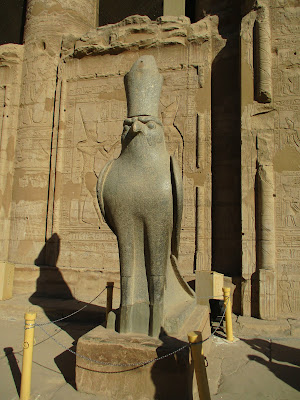Every day of this trip was busy. Monday, December 30, was a very busy day. After an early breakfast on the Viking Ra, we disembarked and waved good-bye as we transferred to the Luxor Airport. Here we boarded a Petroleum Air Services (PAS) charter flight back to Cairo and then transferred by bus to City of Stars Hotel very close to the Cairo Airport.
Since we missed our day at the Giza Pyramids, because we had to stay in Jerusalem two extra days, Ahmed helped us schedule a private tour to visit them after we returned to Cairo on the last day of the trip. We made a quick stop at the City of Stars Hotel, picked up two box lunches, our tour guide and a driver to fight the cross town traffic to get to Giza. We also managed to see a couple of other major sites in Cairo along the way.
The Unknown Soldier Memorial in Cairo is a pyramid-shaped monument. The site was also chosen for the President Anwar Sadat tomb after his assassination in October 1981.
The Citadel of Cairo or Citadel of Saladin is a medieval Islamic-era fortification in Cairo, Egypt. It was the seat of government in Egypt and the residence of its rulers for nearly 700 years from the 13th to the 19th centuries.
GIZA PLATEAU, PYRAMIDS AND THE SPHINX
View of the pyramids at Giza from the plateau to the south of the complex. From left to right, the three largest are: the Pyramid of Menkaure, the Pyramid of Khafre and the Great Pyramid of Khufu. The three small ones in front are called the Queens Pyramids.
The entrance into the Giza Plateau.
Walking up to them, it was hard to imagine how large these 5,000 year old monuments are.
This is the original entrance into the tomb.
We climbed up to the newer public entrance.
Much of the outer limestone shell has worn away leaving the blocks exposed.
Our tour included a camel ride.
Getting up on a camel was a bit of challenge.
When the camel rises, they raise their rear legs first, so you must lean far back and hang on tight to keep from tumbling off face first.
View from the saddle.
Virginia and Kurt on Charlie and Coca Cola.
The afternoon lighting was beginning to put a reddish glow on the Pyramids.
Everyone has to have one of these silly trick shots.
We had to rush, the Sphinx was closing soon. Our tour guide began greasing the guards palms in order to allow our entry.
The Great Sphinx at Giza, Egypt.
The Great Sphinx is among the world’s largest sculptures, measuring some 240 feet long and 66 feet high. It features a lion’s body and a human head adorned with a royal headdress. The statue was carved from a single piece of limestone, and pigment residue suggests that the entire Great Sphinx was painted. According to some estimates, it would have taken about three years for 100 workers, using stone hammers and copper chisels, to finish the statue.
According to some, the damage was caused by Napoleon’s troops, who shot off the nose with a cannon.
The Causeway that runs between the Valley Temple and the Funerary Temple.
The light is fading and it is time to head back to the Hotel. When we got back to the hotel, it was after dark. We took showers, had one last dinner with our tour group, and left for the airport at 10 pm., leaving the bed that we never had time to sleep in.
We arrived in Frankfort, Germany at 5 am, Tuesday, December 31. Fortunately Lufthansa was offering upgrades to Premium Economy for half price. We jumped on this and got great seats for the 11 hour flight to Houston.
So ends our complicated 17 day trip to Israel and Egypt:
9 different airline flights
3 different hotels and a hospital
2 countries on different continents
River Taxies
Fulecca Sailboat
Trams
Ambulance
Taxies
Horse and Carriage
Motorboats
Camels
River Cruise Ship
Many bus rides
and Lots of Walking
We visited 8 Egyptian temples
4 Pharaoh Tombs
6 Pyramids & Sphinx
Several Museums
Churches, shrines, temples, mosques, synagogues
and Walked in Jesus' footsteps

























































































